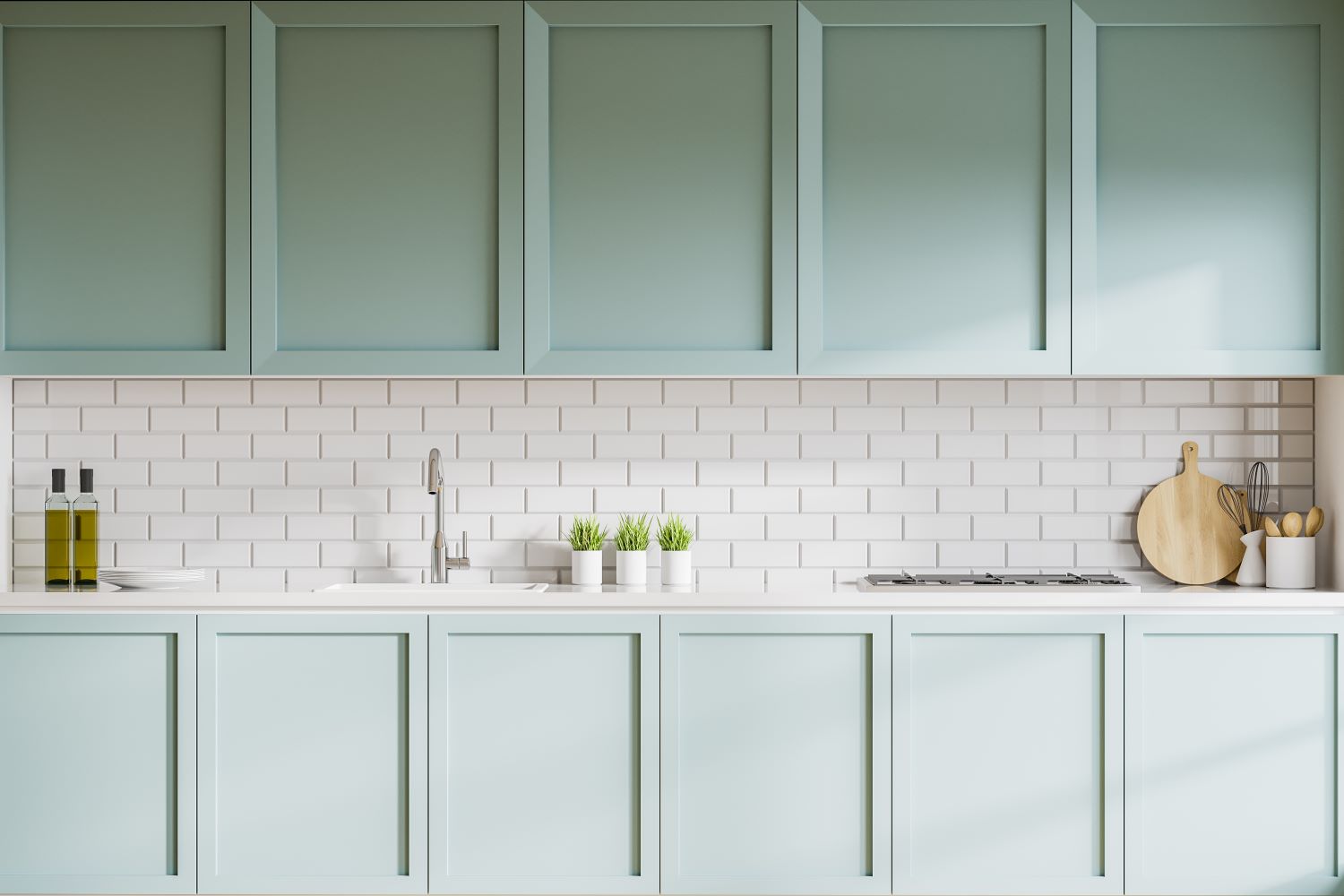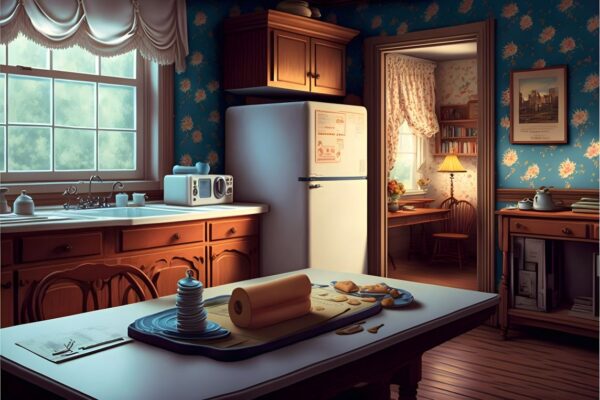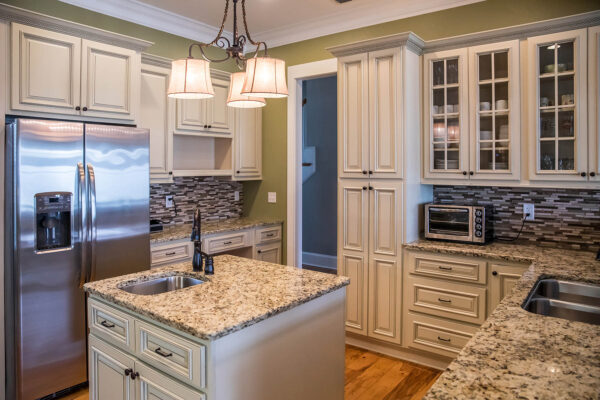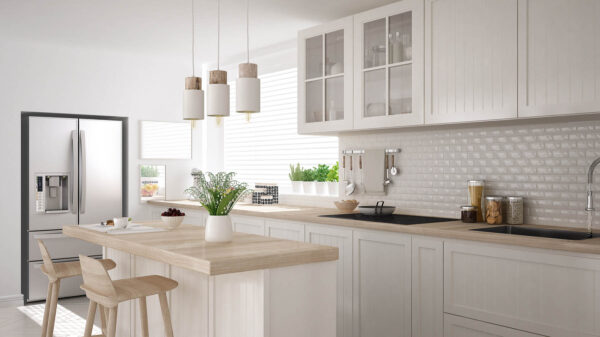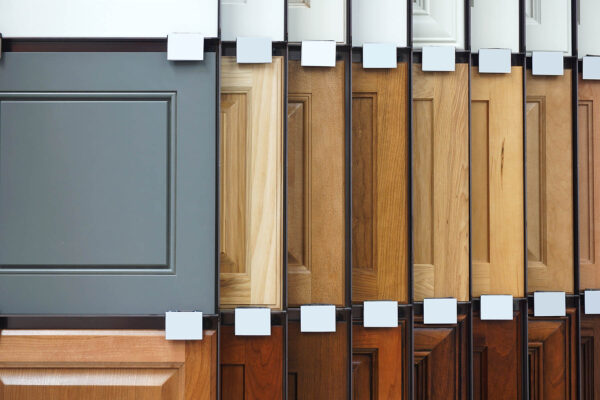If you’re yearning for a kitchen facelift but dread the thought of a full remodel, refacing your kitchen cabinets might be the perfect solution.
Refacing kitchen cabinets refers to the process of updating the appearance of your existing cabinets by replacing the doors, drawer fronts, and applying a new veneer or laminate to the cabinet boxes. Instead of completely replacing the entire cabinets, refacing allows you to give your kitchen a fresh look while utilizing the existing structural components. This approach is cost-effective and less disruptive compared to a full cabinet replacement, making it a popular choice for homeowners looking to update their kitchen without undergoing a major renovation.
However, while cabinet refacing is a cost-effective alternative to a complete kitchen overhaul, it’s not without its potential pitfalls. In this comprehensive guide, we’ll explore the reasons for refacing kitchen cabinets, how to do it, and common problems with refacing kitchen cabinets.
Why Reface Kitchen Cabinets?
Refacing kitchen cabinets has become a popular choice among homeowners looking to update their kitchen without the cost and inconvenience of a full cabinet replacement. This process involves replacing the doors and drawer fronts while applying a new veneer to the existing cabinet boxes. Here are some compelling reasons why many people opt for kitchen cabinet refacing:
- Cost-Effective Solution: One of the primary reasons homeowners choose to reface their kitchen cabinets is the cost savings compared to a full cabinet replacement. Refacing can be significantly more affordable, allowing you to transform the look of your kitchen while staying within your budget. By avoiding the expense of purchasing entirely new cabinets, you can allocate those savings towards other aspects of your kitchen renovation.
- Minimal Disruption: Refacing your kitchen cabinets is a less disruptive option compared to a complete remodel. Unlike a full replacement that involves removing and installing new cabinets, refacing allows you to keep the existing cabinet boxes intact. This means less downtime for your kitchen, allowing you to continue using it throughout the refacing process. With quicker installation times, you can enjoy your updated kitchen sooner.
- Environmentally Friendly: Choosing to reface your kitchen cabinets is a sustainable choice. By utilizing your existing cabinet boxes and only replacing the doors and veneer, you significantly reduce the amount of waste that would end up in landfills. This eco-friendly approach aligns with the growing emphasis on environmental responsibility and reducing our carbon footprint. By opting for refacing, you can contribute to a greener future.
- Versatility and Customization: Refacing provides a wealth of options for transforming the appearance of your kitchen. There is a vast selection of veneers, colors, and styles available, allowing you to create a look that suits your personal taste and complements your kitchen decor. Whether you desire a sleek modern design, a timeless classic look, or something in between, refacing offers the versatility to achieve your desired aesthetic.
- Increased Value: Refacing your kitchen cabinets can enhance the overall value of your home. A fresh, updated kitchen is a major selling point for potential buyers. Refacing allows you to revitalize the heart of your home, making it more appealing to potential buyers and potentially increasing your home’s market value.
- Enhanced Functionality: In addition to the aesthetic benefits, refacing can also improve the functionality of your kitchen cabinets. During the refacing process, you have the opportunity to upgrade the hardware, such as handles, knobs, and hinges. These small changes can have a significant impact on the ease of use and functionality of your cabinets, improving your overall kitchen experience.
Kitchen cabinet refacing offers a cost-effective, minimally disruptive, and environmentally conscious solution for transforming the look of your kitchen. With a wide range of customization options and the potential to increase your home’s value, refacing has become a popular choice for homeowners seeking to refresh their kitchen space. Consider the benefits of refacing when planning your kitchen renovation project, and enjoy a beautiful, updated kitchen without the hassle of a complete cabinet replacement.
The Process of Refacing Kitchen Cabinets
The process of refacing kitchen cabinets involves removing the existing cabinet doors, drawer fronts, and hardware. Then, the cabinet boxes are thoroughly cleaned and prepared for the application of new veneer or laminate. The new material is cut and applied to the cabinet boxes, trimmed to size, and smoothed out for a seamless finish. Finally, the new doors, drawer fronts, and hardware are installed to complete the refacing process.
The Step-by-Step Process of Refacing Kitchen Cabinets
Refacing your kitchen cabinets involves several sequential steps to ensure a successful transformation. Here is a detailed guide to help you navigate the process:
1) Planning and Preparation:
- Measure the dimensions of your cabinets accurately, considering both the doors and drawer fronts.
- Explore various materials, veneers, and styles to determine the look you want to achieve. Consider factors such as durability, maintenance, and compatibility with your kitchen’s overall aesthetic.
2) Removal:
- Remove the existing cabinet doors, drawer fronts, and hardware. Carefully unscrew and detach hinges, handles, and knobs, keeping them aside for reuse or replacement.
3) Preparation:
- Thoroughly clean the cabinet boxes to remove any dirt, grease, or residue. This ensures proper adhesion of the new veneer.
- Inspect the cabinet boxes for any repairs that may be needed, such as filling in holes, sanding rough surfaces, or fixing loose panels. Make the necessary fixes to ensure a solid foundation for the veneer application.
4) Refacing:
- Apply the chosen veneer to the cabinet boxes, carefully following the manufacturer’s instructions. Cut the veneer accurately to fit each cabinet surface, ensuring clean edges and corners.
- Use an adhesive recommended for cabinet refacing and apply it evenly to the cabinet boxes. Carefully position and press the veneer onto the adhesive, smoothing out any air bubbles or wrinkles.
- Trim excess veneer using a sharp utility knife, ensuring precise edges and a seamless appearance. Pay attention to corners and edges, ensuring they align seamlessly with adjacent surfaces.
5) Replacement:
- Install the new cabinet doors and drawer fronts. Attach hinges to the doors and align them with the cabinet boxes. Secure them firmly using the existing or new hardware.
- Ensure proper alignment of the doors and drawer fronts, adjusting hinges and hardware as needed to achieve a uniform and symmetrical look.
6) Finishing Touches:
- Install handles or knobs onto the newly refaced cabinet doors and drawer fronts. Choose hardware that complements the style and finish of the cabinets, enhancing their visual appeal.
- Take a final look at the refaced cabinets and make any necessary adjustments to ensure proper alignment, smooth operation, and consistent gaps between doors and drawers.
- Clean the cabinets, removing any debris or dust from the refacing process, and admire your transformed kitchen.
By following these step-by-step instructions, you can successfully reface your kitchen cabinets, achieving a refreshed and updated look. Remember to exercise caution, attention to detail, and patience throughout the process to ensure a professional-quality outcome.
Problems with Refacing Kitchen Cabinets and Their Solutions
Despite its benefits, you may encounter problems with refacing kitchen cabinets. Here are some common issues and their solutions:
- Poor Quality Cabinets: If your existing cabinets are of poor quality or damaged, refacing won’t solve the underlying issues. In such cases, replacing the cabinets may be a better option. Always thoroughly inspect your cabinets before deciding to reface.
- Complex Process: Refacing might seem straightforward, but it requires precision and skill to get professional-looking results. If you’re not confident in your DIY abilities, consider hiring a professional to avoid potential issues such as misaligned doors or poorly applied veneer.
- Limited Change: Refacing won’t alter the layout of your kitchen or add extra storage space. If you need more than a cosmetic change, a full remodel might be more suitable.
- Mismatched Colors or Textures: Choosing the wrong color or texture can result in cabinets that clash with your kitchen’s decor. To avoid this problem, request samples and see how they look in your kitchen before making a decision.
- Incorrect Measurements: One of the most common problems with refacing kitchen cabinets is incorrect measurements, leading to ill-fitting doors and veneers. Ensure you measure accurately, or even better, have a professional do it.
During the installation phase of refacing kitchen cabinets, several common problems can arise. Here are a few additional issues that you may encounter and some suggestions on how to address them:
- Alignment and Leveling: Cabinets that are not properly aligned or leveled can result in an uneven and unprofessional appearance.
Solution: Use a level to ensure the cabinets are straight and level. Adjust as needed by inserting shims between the cabinets and the wall to achieve proper alignment. Double-check measurements and make any necessary adjustments during the installation process to maintain consistent alignment.
- Inadequate Door and Drawer Gaps: Inconsistent or improper gaps between cabinet doors and drawers can affect functionality and aesthetics.
Solution: Measure and mark the desired gap size between doors and drawers before installation. Use spacers or blocks during the installation process to maintain consistent spacing. Double-check and adjust as needed to ensure even and appropriate gaps throughout the cabinets.
- Hardware Misalignment: Improperly aligned hardware such as hinges, handles, or knobs can affect the functionality and appearance of the cabinets.
Solution: Measure and mark the proper positions for hardware installation before drilling any holes. Use templates or guides to ensure accurate and consistent placement. Make any necessary adjustments during the installation process to align the hardware properly.
- Veneer or Laminate Issues: Problems such as bubbles, peeling, or uneven application of the veneer or laminate can compromise the overall appearance.
Solution: Ensure the cabinet surfaces are clean, dry, and free of any debris or residues before applying the adhesive. Use a roller or squeegee to smooth out the veneer or laminate, removing any air bubbles or wrinkles. Apply even pressure to ensure proper adhesion. If any issues arise, carefully lift the affected area and reapply, smoothing it down for a seamless finish.
- Damage to Existing Cabinets: Accidental damage to the existing cabinet boxes can occur during the removal or installation process.
Solution: Take precautions by handling the cabinets with care during removal and installation. Use proper tools and techniques to avoid unnecessary damage. If damage occurs, assess the severity and consider repair options such as filling holes, sanding, or using wood filler. Seek professional assistance if needed to ensure proper repairs.
In any installation process, it’s essential to approach each step with patience, attention to detail, and careful measurement. If any issues arise, take the time to assess the problem and consider potential solutions. When in doubt, consult with professionals or seek guidance from experts to address specific problems effectively and ensure a successful cabinet refacing installation.
What About Your Cabinet Refacing Project?
Refacing your kitchen cabinets can breathe new life into your kitchen without the cost and hassle of a full remodel. However, it’s crucial to be aware of potential problems with refacing kitchen cabinets. By knowing what to expect and how to handle these issues, you can enjoy the benefits of refacing while minimizing any downsides. Whether you decide to DIY or hire a professional, refacing your cabinets can
